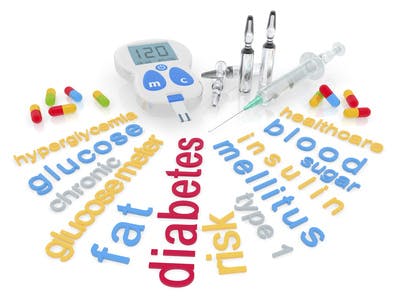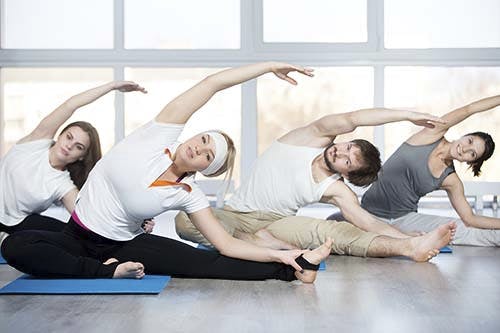9 Benefits of Physical Therapy
Physical therapy is beneficial for those who have been diagnosed with diabetes and individuals with pre-diabetes, also known as insulin resistance. Pre-diabetes occurs when glucose levels are elevated, but haven't yet reached diabetic proportions.
Physical therapy is effective for:
- Better utilization of glucose
- Lower blood pressure
- Reduce the risk of heart disease
- Weight loss
- Reduced nerve disease
- Fewer skin problems
- Improved muscle function and flexibility
- Pain relief
- Lower risk of amputations
People with diabetes are at increased risk of numerous problems that accompany the disease. Damage to nerves is common, resulting in pain and disability. High blood pressure, peripheral vascular disease and stroke are very real concerns.
If not controlled, diabetes damages neurological systems that can cause blindness and one of the greatest threats to diabetics is kidney disease. Injuries heal slowly and can quickly transition into life threatening wounds that won't respond to antibiotics and limbs that must be amputated.
Physical Therapy - Your Weapon Against Diabetes

More than 29 million people in the U.S. have diabetes and it affects both adults and children. Diabetes occurs when the body can't make sufficient insulin, doesn't make any at all, or can't utilize what it does manufacture. Insulin is a hormone made by the pancreas that enables people to use the glucose (sugar) they consume in foods to provide energy for the body to work and play.
There are three types of diabetes. Type 1 is known as juvenile diabetes since it typically begins in childhood. It's an autoimmune condition in which the immune system attacks the pancreas resulting in little, if any, insulin production. Type 1 diabetes requires daily insulin injections.
Type 2 diabetes is often referred to as adult onset diabetes and individuals may or may not require daily insulin injections. Type 2 diabetes can sometimes be managed with exercise, diet and oral medications. It also has a strong genetic component and is exacerbated by high-carbohydrate diets and lack of exercise. It can occur at any age, but is often seen in older adults.
Gestational diabetes occurs during pregnancy and ordinarily disappears after childbirth, but the mother will have an increased risk of developing type 2 diabetes at any time thereafter.
Many of the symptoms of both type 1 and type 2 diabetes can be subtle, often overlooked, and are only discovered after long-term damage to the body has already occurred.
Patients with diabetes may experience:
- Fatigue
- Hunger
- More thirst than normal
- Increased need to urinate
- Increased breakage and hair loss
- Blurred vision
- Dry mouth and itchy skin
- Injuries and wounds that heal slowly
- Yeast infections
- Pain, numbness or tingling in legs and feet
People with type 1 diabetes often experience unplanned weight loss even though they haven't made any changes in their diet. In type 1 diabetes, the body can't utilize the food that's being consumed and the body begins to burn fat and muscle to produce energy. As the body burns fat, ketones are produced and when they build to dangerous levels, nausea and vomiting can occur.
Physical Therapy for Diabetes

Managing diabetes with physical therapy has multiple benefits ranging from more efficient use of glucose and weight loss to improved muscle tone and strength. Aerobic exercise and resistance training are highly effective therapies for managing diabetes and helps relieve pain, expand range of motion, increase flexibility, and improve balance and coordination.
Your physical therapist may choose clinical Pilates, yoga or tai-chi to address movement and weight problems. He/she can also provide nutritional counseling and dietary supplements that are specially designed for your diabetic needs. Assistance is available if you need mobility aids such as crutches, canes, walkers or wheelchairs.
Orthotic devices and shoes can be prescribed to lessen pain, alleviate sores, stabilize the gait and align the body. Your physical therapist can evaluate and care for injuries and show you how to protect your feet from wounds - particularly if you have little or no sensation remaining.
Exercise plans will be adjusted as needed as your overall physical conditioning improves. Your physical therapist has a wide array of therapies that can be used to provide you with the exercise you need to manage glucose levels, lose weight, and improve your health. Hydrotherapy is an effective treatment for improving the body that also relieves the effects of gravity and weight on the body, making it easier to move.
Therapeutic massage may also be utilized to stimulate the immune system, rid the body of toxins and reduce blood pressure. The therapy is beneficial for improving circulation, easing pain, and relieving the stress of dealing with a chronic disease.
Diabetes is a systemic problem that affects every organ in your body. Your physical therapist can help you manage the symptoms and health risks associated with the disease, assist in your continued mobility, and aid you in maintaining overall health.
Physical therapy had a wide variety of therapies that can be utilized to manage the symptoms and effects of diabetes.
Exercise is a key component in the management of diabetes and your physical therapist can create a custom exercise program that's tailored to your fitness level and mobility level.

 One in every eight women will be diagnosed with invasive breast cancer during their lifetime Another 61,000 women will be diagnosed with non-invasive breast cancer, along with 2,600 men. Physical therapy can help, ease the symptoms of treatment and aid in rehabilitation following reconstructive surgery.
One in every eight women will be diagnosed with invasive breast cancer during their lifetime Another 61,000 women will be diagnosed with non-invasive breast cancer, along with 2,600 men. Physical therapy can help, ease the symptoms of treatment and aid in rehabilitation following reconstructive surgery. Therapies for breast cancer will vary widely depending upon the needs of the individual and your physical therapist is one of the first lines of defense against the many symptoms associated with breast cancer treatment, surgical solutions, and the effects that can linger long after the cancer has been removed.
Therapies for breast cancer will vary widely depending upon the needs of the individual and your physical therapist is one of the first lines of defense against the many symptoms associated with breast cancer treatment, surgical solutions, and the effects that can linger long after the cancer has been removed.
